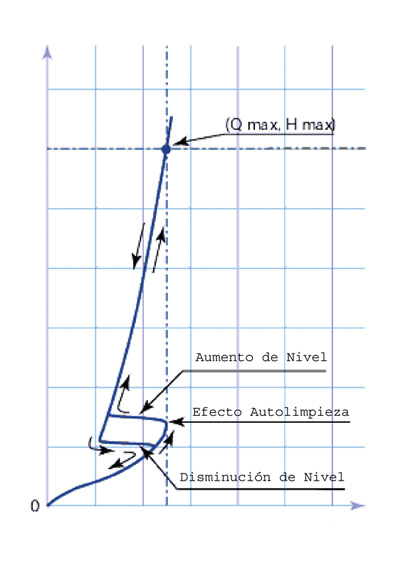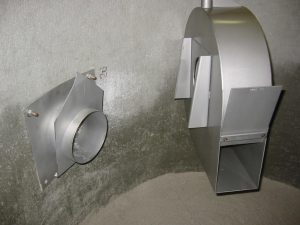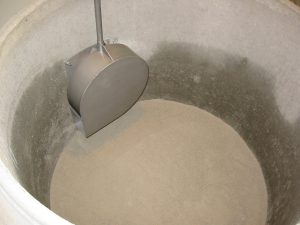Vortex valves regulate small flow rates with a large flow section, minimizing the risk of clogging. The non-existence of moving parts, as well as the fact that they do not need a supply of energy, also reduce maintenance. Manufactured in AISI 316 Stainless Steel, they guarantee maximum durability under all operating conditions.

Characteristic curve: The Vortex regulate the flow depending on the height of the water. In dry weather the flow passes through the regulator without difficulty. If the height of the water rises, air is trapped in the upper part of the regulator chamber and a vortex is created. At this time, the characteristic curve becomes parabolic, reducing the flow rate. The potential energy of the water is lost in the rotation, the section is reduced by the air core, and in this way, the discharge is limited. As the inlet flow to the spillway decreases, the height of the water decreases and the characteristic curve continues in a parabolic shape until air enters the regulator. This air intake destroys the vortex, and creates a surge in discharge, which facilitates upstream cleaning.
Depending on their location they can be differentiated into:
- Vortex in dry chamber:
piped outlet.

- Vortex ein semidry installation.

- Vortex in humid chamber:
simplifies civil works.

In its implementation in urban sustainable drainage systems, Vortex valves in the Wet chamber are the most commonly used.
Within them there are different models of variable dimensions according to the regulation needs depending on each case (flow to regulate, height of water). During installation, a series of recommendations must be followed in order to guarantee optimal operation, and facilitate maintenance work when necessary.



